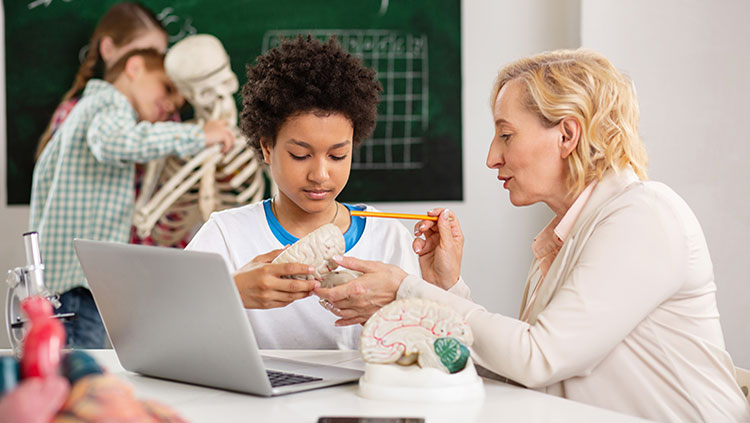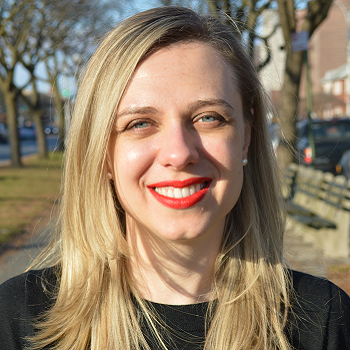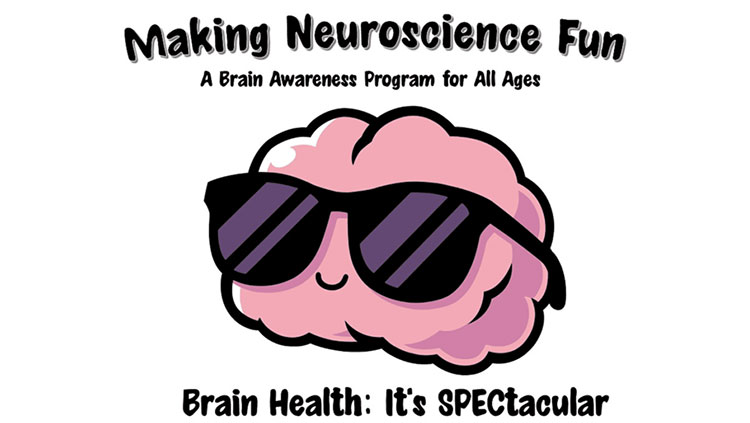Building Trust in Science Starting in the Classroom
- Published13 Mar 2020
- Author Agata Boxe
- Source BrainFacts/SfN

How to teach science literacy in ways that are both effective and responsive to students’ individual backgrounds, concerns, and beliefs — especially in the current climate of science mistrust.
I admit I try to “cure” my colds with home remedies, like sipping on a mixture of freshly squeezed lemon juice sweetened with honey to “fight” the bugs attacking my immune system — despite my evidenced-based knowledge that this elixir will not work. I’m not the only one. The conflict between traditional home remedies and what is scientifically known, is evident from online ads to kitchen-table conversations everywhere — even in my classroom where I teach health and science writing to college students.
While it would be easy to put all the blame on the ongoing epidemic of science denial and misinformation, that’s just one part of the story. Doubts about science are far more complex, ranging from deeply personal to cultural. How can teachers address science mistrust in the classroom — or, ideally, prevent the issue from arising in the first place — among K-12, undergraduate, and adult populations?
Get to Know Your Audience
The underpinnings of science mistrust are far from uniform. Before attempting to combat the issues, teachers must get to know their audience. For example, administer a survey that gently probes their students’ attitudes through questions about things like their favorite TV shows and books they have read, says David Long, an assistant professor of middle grades and secondary education at Morehead State University, who has done research at the intersection of science and religion in education. “It’s a quick way to get certain kinds of data ethically from your students without trampling over privacy laws,” he says.
“My advice for teachers is they have to become very sympathetic to where their students are coming from,” Long says. Teachers should express their empathy by clearly stating in class that people have different worldviews, and, inevitably, they will not always agree on every issue, recommends Michael Tenneson, chair of the department of natural and applied sciences at Evangel University. “And that’s okay because we’re different people,” he says.
Learn the Facts to Build Trust
There is no question that science mistrust has wide-ranging, tangible consequences. Perhaps the most vivid, and horrifying, example is the recent resurgence of measles in the western countries, including the U.S., which researchers have linked to vaccination refusals and actions of the anti-vax movement.
That’s why discussing science mistrust in a respectful way is so important. To prepare for this kind of discussion, teachers should educate themselves on the topic in question — be it vaccines, climate change, or evolution — and gather solid evidence to support what they will say. Teachers should ideally consult data published in peer-reviewed scientific journals. Being knowledgeable and competent helps to establish credibility in students’ eyes, Tenneson says.
The instructor should always aim to be neutral and objective to their audience, especially if the classroom’s ideological, cultural, or religious background is different from their own. The teacher should approach their role with students akin to that of a newspaper reporter rather than an advocate of their own views, Tenneson says.
If a student rejects a scientific fact, asking them why they reject it may be a good idea. “You’re not attacking, you’re just having them unpack their understanding of the world,” Long says. That one question opens the door to what he calls “metacognition” — thinking about how one thinks. This may, in turn, prompt people to become aware of any biases or other factors that have shaped their views. Once a student expresses their opinion, the teacher should thank them for their contribution, and tell them explicitly that it is valued.
Start Early and Get Visual
To inform, or even sway, a skeptical audience, teachers should incorporate visual materials, rather than use dry data alone. One study revealed that showing people pictures of a child with measles and asking them to read a description of the disease written by a mother of an affected child, was more effective at challenging anti-vaccination views than showing them summaries of recent research proving there was no link between vaccines and autism. Other research found that having people visualize the tangible effects of climate change may even help change behavior to pro-environmental. “Just giving people factual information about some phenomenon or process is not going to work, because people are motivated to maintain their beliefs,” says Bastiaan Rutjens, assistant professor in the psychology department of the University of Amsterdam.
“Hopefully that [visuals] will help [students] appreciate where legitimate science comes from and perhaps be more critical when they see something published in a place like Natural News,” said Sarah Fankhauser, an assistant professor of biology at Oxford College of Emory University. Natural News is a website that promotes conspiracy theories and scientifically unsound health claims. Fankhauser thinks that preventing science mistrust through education early on makes more sense than trying to change people’s minds after seeds of mistrust have been planted. To build trust in science, teachers should explain to students — as soon as middle school and high school — what constitutes legitimate evidence and how scientists evaluate evidence through peer review.
Teachers should show students how to assess evidence in practice. For example, as part of her outreach work, Fankhauser has had middle schoolers read and review the results section of a simple experiment. She recommends that teachers use the “Resources” section of the Journal of Emerging Investigators — a publication in which student-scientists publish their research manuscripts — to find and implement similar activities. Even better, teachers may have students conduct their own experiments and submit their results to the journal.
Tell A Story with Reputable Characters
Storytelling is another invaluable component of any science teacher’s toolbox, because it engages the audience through empathy with the characters involved in a particular narrative. “I think having them listen to a reputable source is really helpful,” says Andrea Bazemore, a Dallas, Texas-based teacher and educational consultant at The Black Apple — a company that integrates social justice with common core and state standards. Bazemore suggests that teachers incorporate science documentaries and relevant NPR podcasts into their instruction, to engage students and help them understand complex topics.
Bring experts into the classroom as a way of storytelling and showing, not telling. “If you can get your hands on an experiment,” Bazemore says, “there is nothing like that.” Bazemore once invited a pilot who explained the environmental effects of airports on neighboring habitats. She has also had other experts come in and perform science demonstrations with students.
Diversity also encourages trust in science. Fankhauser says that teachers should strive to invite diverse scientists in classrooms with students from a variety of backgrounds. Such role models can cement students’ trust and interest in science through shared experiences. Says Fankhauser: “It makes [students] realize that, ‘Oh, these are people just like me.’”
CONTENT PROVIDED BY
BrainFacts/SfN
References
Horne, Z., Powell, D., Hummel, J. E., & Holyoak, K. J. (2015). Countering antivaccination attitudes. Proceedings of the National Academy of Sciences, 112(33), 10321. doi: 10.1073/pnas.1504019112
Hussain, A., Ali, S., Ahmed, M., & Hussain, S. (2018). The Anti-vaccination Movement: A Regression in Modern Medicine. Cureus, 10(7), e2919–e2919. doi: 10.7759/cureus.2919
Lee, P.-S., Sung, Y.-H., Wu, C.-C., Ho, L.-C., & Chiou, W.-B. (2018). Using Episodic Future Thinking to Pre-Experience Climate Change Increases Pro-Environmental Behavior. Environment and Behavior, 52(1), 60–81. doi: 10.1177/0013916518790590
Public Knowledge about S&T. National Science Board. 2016. Science and Engineering Indicators 2016. Arlington, VA: National Science Foundation (NSB-2016-1). Retrieved from https://www.nsf.gov/statistics/2016/nsb20161/#/report/chapter-7/public-knowledge-about-s-t/pseudoscience
Moran, M. B., Lucas, M., Everhart, K., Morgan, A., & Prickett, E. (2016). What makes anti-vaccine websites persuasive? A content analysis of techniques used by anti-vaccine websites to engender anti-vaccine sentiment. Journal of Communication in Healthcare, 9(3), 151–163. doi: 10.1080/17538068.2016.1235531
Rutjens, B. T., Sutton, R. M., & van der Lee, R. (2018). Not All Skepticism Is Equal: Exploring the Ideological Antecedents of Science Acceptance and Rejection. Personality & Social Psychology Bulletin, 44(3), 384–405. doi: 10.1177/0146167217741314
Scheufele, D. A., & Krause, N. M. (2019). Science audiences, misinformation, and fake news. Proceedings of the National Academy of Sciences, 116(16), 7662. doi: 10.1073/pnas.1805871115
YouGov. April 28 - 29, 2017 - 1000 US Adults. Retrieved from http://big.assets.huffingtonpost.com/tabsHPScienceandPolitics20170428.pdf
YouGov. Dec 6 - 7, 2013 - 1000 US Adults. Retrieved from http://big.assets.huffingtonpost.com/tabs_HP_science_20131209.pdf
Also In Teaching Techniques
Trending
Popular articles on BrainFacts.org













